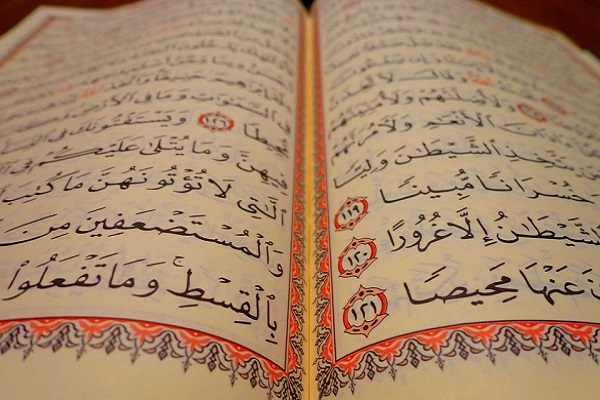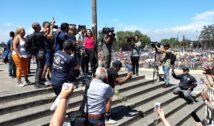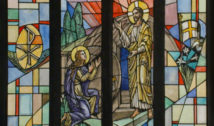
See the Giant Qur’an on Display at the Smithsonian
- By Derek Welch --
- 05 Nov 2016 --

Smithsonian’s Sackler Gallery is featuring a Qur’an so large it needed be transported using wheelbarrows.
On display at the Smithsonian’s Arthur M. Sackler Gallery in Washington, D.C. is “The Art of the Qur’an: Treasures from the Museum of Turkish and Islamic Arts.” This much-awaited display features a 15th century Qur’an so big, it needed to be moved around using wheelbarrows. At the show, two consecutive pages of this Qur’an will be put display.
See the Giant Qur’an on Display at the Smithsonian[/tweetthis]
The two sprawling pages are each 5 feet by 7 feet and have lines of calligraphy standing 8 to 9 inches high. Their existence can be dated back to around the year 1400 and they have since been on long-term loan with the Smithsonian museum.
The assistant curator of Islamic Art, Simon Rettig, said the pages on display contain passages explaining “signs of God and evidence of His goodness are all around.” These passages also mention the history of some ancient people, the refutation of materialistic views and finally, it contains warnings to those who go against the teachings while also encouraging forgiveness. This is evident from the passage reading, “If anyone does a righteous deed, it ensures to the benefit of his own soul; If he does evil, it works against his own soul.”
Another interesting fact about the content of the pages being displayed is the story of Timur, the feared nomadic conqueror who governed a great empire in central Asia. Timur, or as he was known by the Europeans, Tamerlane, was not impressed by the level of art needed to make a normal sized Qur’an that was tiny enough to fit inside a signet ring. Omar Aqta’, a calligrapher, set out to show off his amazing talent by going large. Massumeh Farhad, the chief curator of the show said Omar showed bravery by embarking on this project despite it being a daunting task.
Omar Aqta’ produced a Qur’an so large that it needed to be carried to the palace in a wheelbarrow. This greatly pleased Timur and Omar was therefore rewarded handsomely.
When it comes to the Qur’an being broken up into pages, it is unclear as to whether it had ever been bound into one volume from the beginning. The breaking up is however not uncommon. Thousands of pages are believed to have been lost and today, just 10 remain. The two on display were discovered in the 19th century in a mausoleum in eastern Iran by a British traveler.
In the DC area? Check out "The Art of the Qur'an," a new exhibit at @smithsonian @FreerSackler, opening tomorrow! https://t.co/VyNySxsKgW pic.twitter.com/pFgw99W5hB
— El-Hibri Foundation (@ElHibriFdn) October 21, 2016
This show will bring together folios and manuscripts from the collection of the Sackler and Freer Gallery of Art in Istanbul and this will all form the Smithsonian’s Asian art museum. It will also include a variety of styles of calligraphy and illumination used over the centuries, from the late 7th century to the 17th century.



















